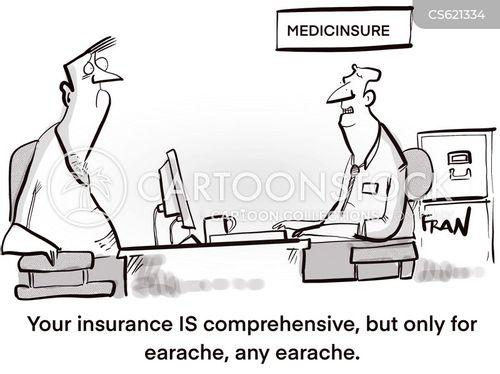Navigating the intricate world of insurance can often feel like deciphering a complex puzzle, where the fine print holds the key to your financial security. While insurance policies are designed to offer protection and peace of mind, hidden within their detailed clauses are potential loopholes that can undermine your coverage. As a policyholder, it is crucial to understand these vulnerabilities to ensure that you are not caught off guard when you need your insurance the most. In this article, we will explore the most common insurance policy loopholes that could leave you exposed, equipping you with the knowledge to safeguard your interests and make informed decisions. By shining a light on these often-overlooked aspects, we aim to empower you to proactively address potential gaps in your coverage and fortify your financial resilience.
Understanding Ambiguities in Policy Language
Insurance policies are often riddled with vague terms and phrases that can lead to misunderstandings. These ambiguities arise due to the complex nature of legal language and the need for policies to cover a broad range of scenarios. As a policyholder, it’s crucial to be vigilant about these potential pitfalls to avoid unexpected denials or disputes.
- Undefined Terms: Policies often use terms like “reasonable” or “sufficient” without clear definitions, leaving room for interpretation.
- Exclusions and Limitations: These sections might contain vague language that can be interpreted in multiple ways, potentially limiting coverage unexpectedly.
- Conditional Coverage: Some policies offer coverage only under specific conditions, which may not be explicitly stated, leading to confusion.
By carefully reviewing policy documents and seeking clarification on ambiguous terms, you can better protect yourself against unforeseen loopholes. Consulting with a legal expert can also provide additional insights into the intricacies of your insurance coverage.

Identifying Coverage Exclusions and Limitations
When scrutinizing an insurance policy, it is crucial to thoroughly examine the exclusions and limitations that may apply. These are specific conditions or circumstances under which the policy will not provide coverage, and they can significantly impact your protection if not understood clearly. Exclusions often include scenarios like pre-existing conditions, acts of war, or natural disasters. Limitations might involve caps on certain types of claims or restricted coverage periods.
- Pre-existing Conditions: Many health and life insurance policies exclude coverage for conditions that existed before the policy’s effective date.
- Acts of War or Terrorism: Some policies may not cover damages resulting from war or acts of terrorism, leaving policyholders vulnerable in such events.
- Natural Disasters: While homeowners insurance typically covers many natural disasters, certain events like floods or earthquakes may require additional coverage.
- Claim Caps: Be aware of any financial limits on claims, which could result in out-of-pocket expenses if your claim exceeds these limits.
Understanding these exclusions and limitations is not just about reading the fine print; it’s about ensuring that your insurance policy truly meets your needs without unexpected gaps in coverage.
Strategies for Negotiating Better Terms
When faced with the daunting task of negotiating insurance policy terms, it’s crucial to approach the process with a well-prepared strategy. Research is your most potent tool; thoroughly understand the policy in question and pinpoint any areas that may be ambiguous or unfair. Comparative Analysis can also be beneficial—review similar policies from different providers to identify competitive offers and use these as leverage in your discussions. Documentation is key; ensure all negotiations are documented and obtain any agreements in writing to avoid future discrepancies.
- Ask Questions: Don’t hesitate to ask the insurer for clarification on any terms or conditions that seem unclear. This will not only enhance your understanding but also show the insurer that you are informed and vigilant.
- Negotiate Coverage Limits: Request adjustments in coverage limits or deductibles to better align with your specific needs. A higher deductible might lower your premium, while broader coverage might provide better protection.
- Seek Discounts: Inquire about potential discounts for bundling policies or maintaining a claims-free record. Many insurers offer discounts that aren’t openly advertised.
Lastly, consider engaging a professional if the negotiations become too complex. An insurance broker or attorney can provide valuable insights and ensure you secure the best possible terms. By employing these strategies, you can navigate the negotiation process with confidence and achieve more favorable policy conditions.

Steps to Ensure Comprehensive Protection
To guard against unforeseen pitfalls in your insurance policy, it is crucial to adopt a proactive approach. Start by thoroughly reviewing your policy documents to identify any ambiguous language or clauses. Engage in open discussions with your insurance agent to clarify any uncertainties. Additionally, ensure you are aware of all exclusions and limitations that may affect your coverage. Consider the following actions to bolster your protection:
- Regular Policy Reviews: Schedule annual reviews of your insurance policies to ensure they align with any changes in your life circumstances or asset values.
- Document Everything: Keep detailed records of all communications with your insurance provider, including emails and phone conversations, to serve as evidence if disputes arise.
- Seek Expert Advice: Consult with an independent insurance advisor who can offer unbiased insights and help you identify potential gaps in your coverage.
- Custom Endorsements: Where possible, request tailored endorsements to address specific risks that may not be covered under standard policy terms.
By taking these steps, you can significantly enhance your insurance coverage, ensuring a safety net that is as comprehensive as it is reliable.

